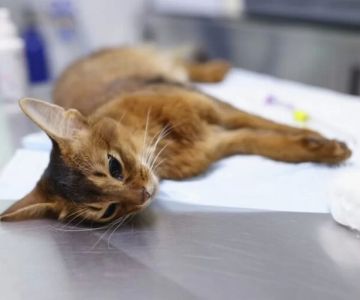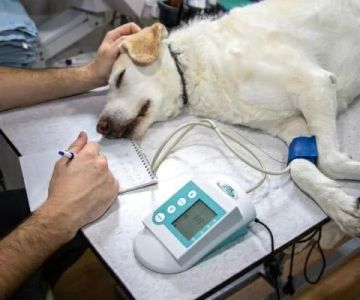- understanding-feline-infectious-peritonitis - What feline infectious peritonitis is
- common-symptoms-of-fip - Recognizing early and advanced symptoms
- how-fip-develops-in-cats - The causes and transmission of the disease
- diagnosing-fip-in-pets - How veterinarians identify FIP
- modern-treatment-options - Effective approaches to manage FIP
- real-pet-cases-and-success-stories - Real experiences with feline recovery
- how-hidden-brook-veterinary-can-help - Getting professional veterinary care
1. Understanding Feline Infectious Peritonitis (FIP)
Feline Infectious Peritonitis, often referred to as FIP, is one of the most complex and emotional challenges faced by cat owners. It is caused by a mutation of the feline coronavirus (FCoV), a virus that is typically harmless in its natural state. In some cats, however, the virus mutates inside the body and triggers an overreaction of the immune system, leading to FIP. Understanding how to recognize and treat pet feline infectious peritonitis is essential for early intervention and improving your cat’s quality of life.
This disease can affect both young kittens and adult cats, though it is most common in cats under two years old or those living in multi-cat environments. Because FIP mimics many other conditions, recognizing it early can be challenging, which is why consistent veterinary care and observation are crucial.
2. Common Symptoms of FIP in Cats
The symptoms of FIP can vary widely depending on whether the cat has the “wet” or “dry” form of the disease. Both forms can be life-threatening, but early detection greatly increases the chances of successful management.
2.1 Early Signs to Watch For
Initial signs often include a mild fever that doesn’t respond to antibiotics, fatigue, and loss of appetite. Cats may also appear more withdrawn or less playful. Because these symptoms are subtle, many owners mistake them for a minor infection or stress-related behavior.
2.2 Wet (Effusive) Form
In the wet form of FIP, fluid builds up in the cat’s abdomen or chest cavity. This causes visible swelling, difficulty breathing, and lethargy. A cat with fluid accumulation in the abdomen may appear pot-bellied even if it is losing weight elsewhere.
2.3 Dry (Non-effusive) Form
The dry form does not cause fluid buildup but instead results in inflammation of the organs, eyes, or brain. Symptoms may include jaundice (yellowing of the eyes or gums), vision problems, coordination loss, and neurological changes such as tremors or seizures.
3. How FIP Develops in Cats
FIP begins when a feline coronavirus mutates inside a cat’s body. The original coronavirus is common among cats and is often transmitted through shared litter boxes, food bowls, or grooming. In most cases, it causes no symptoms or only mild intestinal upset. However, in a small percentage of cats, the virus changes form and triggers an immune-mediated inflammatory response.
This response causes the body to attack its own tissues, resulting in severe inflammation and fluid accumulation. Stress, genetics, and other infections can make a cat more vulnerable to this mutation. Cats in shelters or catteries are particularly at risk due to close contact with others carrying the virus.
4. Diagnosing FIP in Pets
Diagnosing FIP is one of the most challenging aspects of veterinary medicine because there is no single definitive test. Instead, veterinarians rely on a combination of physical exams, bloodwork, imaging, and history to make a clinical diagnosis.
4.1 Laboratory Tests
Blood tests may reveal elevated protein levels, low albumin, and a high white blood cell count — all signs consistent with inflammation. Specialized tests like PCR (polymerase chain reaction) can detect the presence of mutated coronavirus strains, though results must be interpreted cautiously.
4.2 Imaging and Fluid Analysis
For the wet form, analyzing fluid from the abdomen or chest helps confirm the diagnosis. The fluid often appears thick, straw-colored, and contains proteins typical of FIP-related inflammation. X-rays and ultrasounds can also help detect internal changes or fluid buildup.
5. Modern Treatment Options for FIP
For decades, FIP was considered fatal, but recent breakthroughs in antiviral medication have given hope to cat owners worldwide. Understanding the available treatment paths is crucial for helping your pet recover or live comfortably.
5.1 Antiviral Medications
Modern antivirals such as GS-441524 have shown remarkable results in managing FIP. This medication targets the virus’s replication process, helping the cat’s immune system regain control. Treatment usually lasts several weeks and requires careful monitoring by a veterinarian.
5.2 Supportive Care
In addition to antiviral therapy, supportive care plays a key role. This includes maintaining hydration, providing high-quality nutrition, and managing secondary infections. Regular veterinary checkups help adjust treatment as the cat responds to therapy.
5.3 Emotional and Financial Considerations
Treating FIP can be emotionally draining and financially demanding. However, many pet owners report that the outcome — seeing their cat regain health and energy — is worth every effort. Discussing your options with professionals at Hidden Brook Veterinary can help create a realistic and effective care plan tailored to your cat’s needs.
6. Real Pet Cases and Success Stories
One heartwarming story involves a young tabby named Luna, diagnosed with wet FIP at only eight months old. Her owner noticed her abdomen swelling and sought immediate help at Hidden Brook Veterinary. After a detailed diagnosis and treatment with antiviral medication, Luna began improving within two weeks. Today, she’s a thriving, playful cat — a testament to the importance of early intervention.
Another case involved Milo, a senior rescue cat showing signs of the dry form of FIP. With proper medication, immune support, and regular check-ins, Milo’s condition stabilized, and he continues to live comfortably under close veterinary supervision. These stories show that while FIP is serious, it is no longer hopeless when detected early and treated professionally.
7. How Hidden Brook Veterinary Can Help
If you suspect your cat may have FIP, prompt professional care is essential. The experienced team at Hidden Brook Veterinary provides comprehensive diagnostic services, compassionate care, and advanced treatment plans designed to improve your pet’s well-being. They understand how emotionally challenging FIP can be and work closely with pet owners to develop supportive strategies that fit both the cat’s medical and emotional needs.
Whether it’s understanding early symptoms, exploring the latest treatment options, or managing long-term recovery, Hidden Brook Veterinary is dedicated to providing the highest quality of care. Remember, awareness and timely action are your best tools in protecting your feline companion from the devastating effects of FIP.











